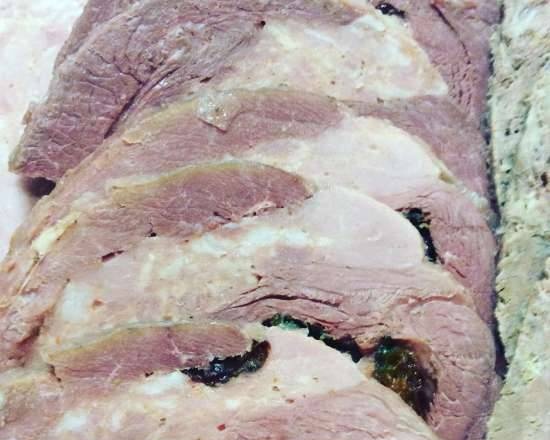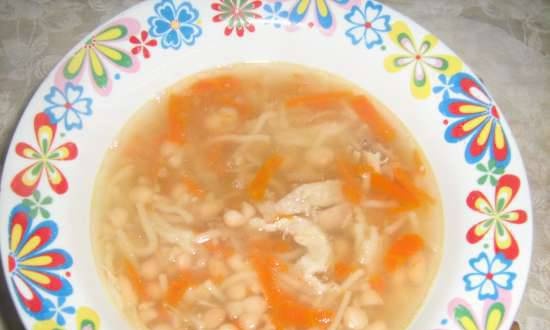|
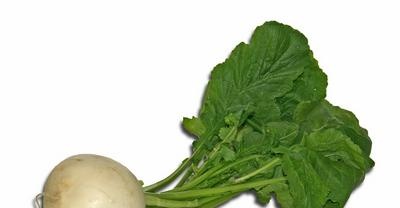 The old Russian fairy tale "Grandfather planted a turnip" is, apparently, not about the usual yellow-skinned turnip, but about the fodder - turnip. It is turnips that grow such enormous root crops that even call for help. Five or six kilos. The old Russian fairy tale "Grandfather planted a turnip" is, apparently, not about the usual yellow-skinned turnip, but about the fodder - turnip. It is turnips that grow such enormous root crops that even call for help. Five or six kilos.
Not flat by themselves, but round or even longish, not at all like our garden turnip. They are often white in color, sometimes with a violet sheen at the top.
Lured by the staggering yields, growers of the twenties tried to grow turnips more and more. Huge, like sugar loaves, living blocks sticking out of the ground in the fall. Their tops rose above the soil, appetizingly gleaming with a dull matte blue. The crispy white flesh, like compressed snow, felt as juicy as a watermelon or melon.
It was this juiciness that failed. When they analyzed the contents, it turned out that the giant vegetable accumulates little nutrients. In a long line of domesticated root crops, it takes my last place. It was not without reason that before the revolution only landowners dared to sow it. And then voices of doubt were heard: is it worth growing? Too much water! And the area under the trendy vegetable has decreased.
However, livestock breeders intervened: milk yield is growing! It turns out that turnip is a milk-producing vegetable! And again, the fancy plant becomes desirable and fashionable. New Zealanders and Australians are already feeding them sheep. Profitable. No need to bother digging watery lumps. The sheep are self-service. If you want to eat, dig it yourself. Digging. And how! They even overeat! So attacks of suffocation begin. Well, serve it right, don't be greedy!
A real turnip paradise is in England, where every night, abundant dew (exactly the one that prevents cucumbers from growing) revives the vegetation, and the giant vegetable is doing excellently. A hundred years ago, the British came up with the saying "Turnips is the core on which the whole economy revolves." They almost deified this plant and believe that the country owes all its successes in breeding livestock and in many other things to him.
Now everyone seems to understand that it is risky to expel this creature from the fields. It is also good because it goes further north than others. For the Arctic Circle. Into the icy tundra. What can you replace it with?
 And yet, observing objectivity, one must admit the following. Although we get more milk from the new culture, but what kind? Opinions are different here. Some say the milk tastes better. Others do the opposite. And that milk products have become worse, it is explained by the fact that turnips, like our yellow turnip, have a sharp "turnip" taste. Mustard oils give it (after all, mustard relatives). Livestock breeders, of course, conducted special studies, how many of these oils are in the feed and how much a cow should eat without harm to milk and herself? And yet, observing objectivity, one must admit the following. Although we get more milk from the new culture, but what kind? Opinions are different here. Some say the milk tastes better. Others do the opposite. And that milk products have become worse, it is explained by the fact that turnips, like our yellow turnip, have a sharp "turnip" taste. Mustard oils give it (after all, mustard relatives). Livestock breeders, of course, conducted special studies, how many of these oils are in the feed and how much a cow should eat without harm to milk and herself?
It turned out that no more than six grams per day. This means no more than 30 kilograms of turnips per day. What if our cow wants to eat forty? If so, then it is necessary to bring out varieties where there would be less mustard oils. Or not at all. And now, understanding this difficult issue, botanists noticed that the turnip taste decreases in those specimens where the leaves are more dissected. So, is it worth selecting such forms - and the issue is resolved?
May be so. But then a new problem arises. But what if the cows don't like the new food? Let's compare with our human tastes. After all, varieties of garden turnip have long been bred almost without mustard oils. Root crops are very tender, juicy. But opinions were divided. Some consider this turnip to be completely tasteless. What a turnip without a sharpness that burns your mouth? Just grass! And for this reason, preference is given not so much to a root crop as to "tops" - a rosette of leaves. They make a salad of them. They claim that it is the most savory of all salads.And most importantly, the cheapest source of vitamin C.
The Germans have their own opinion about the turnip. Of all the varieties, they have long respected the most one small turnip from the Teltow district near Berlin. The root vegetable of the Teltovskaya turnip is the size of a chicken egg, and its shape is like a spindle: not flat, but long. There is not so much juiciness in it, but the pulp is very tender, sweet and satisfying, like a marshmallow. And although the appearance of the root vegetable does not make an impressive impression, the pungent spicy taste is remembered forever. Food lovers start looking for a rare vegetable. It is ordered at gala dinners. In previous years, Berlin restaurants used the Teltowska turnip to recruit regular customers.
They took the incomparable little girl to other German cities. We also shipped abroad. Of course, Telt's gardeners could not keep their monopoly for a long time. Little by little, they began to grow their favorite vegetable near Hamburg and Magdeburg, where the soils resembled those of Telt. He grew up there, even improved his appearance. But the quality was not the same ...
The British made the same attempt. Since the 17th century they have been considered masters of rap. Turnips went from there. But they were unlucky with the Teltow turnip.
True, it has become more impressive with them, lengthened and turned yellow. But it has lost its sweetness and sharpness. I don't know if anyone suggested to the British or if they thought of it themselves, but they decided that it was all about the soil. To get that, Telt's land! Let's go to Germany. Dug up. They brought it. We sowed a turnip. And again failure. Even in their native land, the turnip failed. What did she lack now?
The Hamburg Germans also tried to bring land from outside Berlin. Poured in a thick layer. They were given such thorough care that the finest, most precious vegetables did not receive. But everything went to pieces. The better the care was, the further the capricious treasure deviated from the standard. The impression was created: in order to become perfection, the turnip had to break through, squeeze through the stubborn, heavy and dense clay.
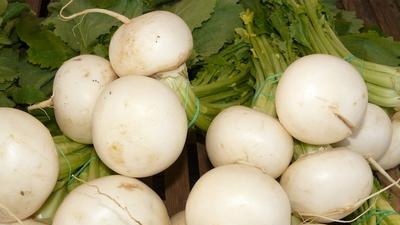 In the end, the matter was so confused that no one could figure out what kind of soil the unfortunate creature needed. Even the authors of well-known textbooks and manuals were mistaken. The author of the "Russian Garden", which went through eight editions, R. Schroeder assured that the Teltovskaya turnip retains its qualities only on sandy soil. And if it is sown on clay, then it loses its pleasant taste, becomes lanky, loose and, in addition, empty. Others believed that the situation was just the opposite, that the soil needed clay, and it degenerates on sandy. In the end, the matter was so confused that no one could figure out what kind of soil the unfortunate creature needed. Even the authors of well-known textbooks and manuals were mistaken. The author of the "Russian Garden", which went through eight editions, R. Schroeder assured that the Teltovskaya turnip retains its qualities only on sandy soil. And if it is sown on clay, then it loses its pleasant taste, becomes lanky, loose and, in addition, empty. Others believed that the situation was just the opposite, that the soil needed clay, and it degenerates on sandy.
The confusion was resolved by the agronomist V. Gomilevsky. Indeed, the Teltovskaya turnip lives among the vast array of barren Brandenburg sands. This is why many seed catalogs claim that it requires poor, sandy soil. In fact, an island of heavy, dense clays wedges into the sea of lean sands. It is on a clay island that a unique creature is grown.
In general, it was never possible to approve the Berlin baby abroad. And in her homeland, she began to gradually disappear. Experts from the GDR, who wrote the excellent book "The Fruits of the Earth", no longer mention it. And you can't lose this variety. It has many advantages besides taste. The first plus is that it is well kept. The second - there is so much edible in the pulp! The third - is not affected by the dangerous disease of other rap - keel ...
However, the latter is justified only near Berlin. And when they sowed near Leningrad, I got sick. Cause? So far we can only guess about it. Could it be that the soils of the Teltow District are not suitable for keels? Or maybe the little turnip growing in solitude did not acquire immunity in time? Our yellow Petrovskaya turnip is a different matter. It has been widely grown for a long time. Kiloy was sick more than once. And when artificially infected, it survived.
Now is the time to talk about some of the other enemies of the rap tribe. The first place in harmfulness is occupied by an earthen flea. Such a small bug, with a grain of millet the size.Jumps perfectly, like a real flea. About thirty centimeters high. It does not touch adult roots, but shaves off the seedlings cleanly, while they are not yet coarse.
Sometimes you have to re-seed everything.
The Russian peasant women, of course, had a way of dealing with a flea. They did so. They took a small board, the size of the one on which linen is ironed. They smeared it with tar and gently moved it over the ridge. Earthen fleas bounced and stuck. Those who were short of time acted differently. They placed old tar buckets upside down on the ridges, giving the bugs the right to jump and stick at a convenient time for them. Still others sprinkled the crops with ash from a furnace or simply dust from the highway. Maybe it was because more tar accumulated in it, which dripped from the passing carts?
Good or bad, these tricks were only suitable for vegetable gardens. In the fields, the peasants developed a different strategy. We chose a reliable landmark - Peter's day. It came at the end of June. So that the flea did not touch the turnip, it was necessary to contrive to sow in such a way as to get a marketable product by Peter's day. For this, seeds were sown at the end of April. And until the flea appeared, the seedlings had time to coarse. The flea did not touch tough seedlings. However, early turnips are not suitable for storage. For winter supplies, they sowed late, when the flea armada had already departed. The sowing time fell again on Peter's day. It seems that is why they called our yellow turnip Petrovskaya.
 And Finnish gardeners use a different method of protection. Seeds are sown in two steps. Their field is plowed up so that ridges and furrows are obtained. The first sowing is done in the ridges. The second - a few days later - into the furrows. Here the sun warmed up - and shoots appeared. On ridges and furrows. The flea goes to feed and meets shoots of different ages. Chooses more tender ones - those that are sown in the furrows. While he is busy with them, early shoots on the ridges will coarsen and are no longer available for the bug. And Finnish gardeners use a different method of protection. Seeds are sown in two steps. Their field is plowed up so that ridges and furrows are obtained. The first sowing is done in the ridges. The second - a few days later - into the furrows. Here the sun warmed up - and shoots appeared. On ridges and furrows. The flea goes to feed and meets shoots of different ages. Chooses more tender ones - those that are sown in the furrows. While he is busy with them, early shoots on the ridges will coarsen and are no longer available for the bug.
And now it remains to answer the question that will surely arise: how did it happen that the turnip, which nurtured our ancestors, the northerners, suddenly disappeared from the field of vision of agronomists? It disappeared so thoroughly that not all textbooks mention it. It's the potatoes. It was he who drove the yellow beauty from the fields and gardens. And this oblivion sometimes cost the peasant dearly. There was such a case. After one dry summer in the city of Vitebsk, a booklet entitled “Turnip - a lifesaver during a crop failure” was published. Its author, J. Borokhovich, proposed his own strategic plan. When the bread dries up from the summer heat and when those crumbs of grain that survived are collected, do not lose heart and do not give up. Sow turnips on the stubble. Turnip is a high-speed plant. It takes only six or seven weeks from sowing to harvest. She will have time to ripen before autumn. In addition, at this time the flea will disappear and you will not have to fight with it. Then collect the roots. Grate. Mix in half with flour and bake breads. Borokhovich ter and pitch. The bread was even tastier than regular bread. And more vitamin. In addition, it did not grow stale so quickly, which especially struck Borokhovich. Then, when the best times came, he could no longer leave his turnips and continue to bake non-hardening bread.
This last fact can be explained quite easily, given that turnip contains a lot of sugars and the lion's share of them are fructose and glucose. By themselves, they are much more useful than sucrose, which is almost absent in turnips. If you remember that buckwheat honey kept the bread fresh for long days, then the explanation is the same here. Fructose crystallizes poorly and is very hygroscopic. The bread draws in moisture and does not dry out as quickly.
So, those peasants who did not forget about turnips were getting out of a difficult situation. If not wheat flour, then they stuffed cast iron with turnips, turned it over and put it in a Russian oven. It turned out that very steamed turnip, which you cannot imagine easier. If the next day the same procedure was repeated again with the steamed mass, then a semblance of oriental sweets was obtained.Unlike the eastern ones, the northern sweets were healthier because they contained the best set of sugars.
Observing the truth, you need to make a reservation: in those distant years, the turnip of the peasants was not the same as it is now. Not yellow, but motley. In the last quarter of the last century, the well-known Sennovsky market in St. Petersburg was littered with variegated turnips. She was sold out in great demand. Both children and adults loved it, although it tasted a little bitter.
But then another turnip, Petrovskaya, began to seep into the market. Every year it became more, and less colorful. The motley supporters were indignant. They called Petrovskaya one-color, dull, boring, ugly. Indeed, she did not shine with variegated colors. But there was no bitterness in her. The St. Petersburg buyer offered no resistance to the newcomer, and little by little the motley turnip completely disappeared from the shelves. Now few people remember about her.
But they remembered one relative of the turnip, which was once famous, and then forgotten. He appears in the markets of the capital when the summer is over and the motley jumble of vegetables leaves. When winter comes here in Central Russia. Georgians who bring this herb from the south call it tsitsmata. In Russian - watercress... Its bundles are like bundles of young dandelion leaves... Rare taste. It replaces turnip leaves for us, which are difficult to obtain in our harsh climate in winter.
The adventures of turnips do not end there. Another story is told. A certain peasant named Sidorenko kept chickens. In summer, his pets grazed along with neighboring hens. And they were no different from them. However, in winter, when the cackling herd was driven into a stuffy, cramped hut, changes began. The chickens of our hero in the cramped halls carried much more eggs than the neighbors, who sat in exactly the same typical chicken coops. By spring, the neighboring chickens turned out to be lethargic, as if they had lost the joy of life. On the contrary, the Sidorenkins looked like athletes, as if they had spent the winter in the fresh air, somewhere in Sochi.
FROM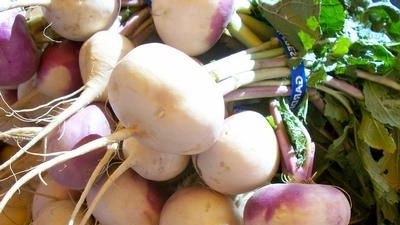 the settlers began to suspect that Sidorenko was mixing some kind of drug into the feed. Maybe even hormones? Curiosity overcame them, and they came and asked point-blank: what is the reason for such an incomprehensible cheerfulness? the settlers began to suspect that Sidorenko was mixing some kind of drug into the feed. Maybe even hormones? Curiosity overcame them, and they came and asked point-blank: what is the reason for such an incomprehensible cheerfulness?
Sidorenko led the guests into the kitchen, where the chicken coop was located. He took a piece of bread, opened the cage door, and hung the top of the piece on a hook that hung from the ceiling. Seeing the food, the chickens reluctantly approached. One of them pecked for a test, but did not eat, so the owner replaced the bread with a cucumber. The new food made a much better impression on the inhabitants of the hen house. Several birds have already been tasting. But, apparently, they were full, and interest in the cucumber quickly disappeared.
- Now look!
With these words, Sidorenko removed cucumber and hung a yellow round turnip. What started here! The chickens jumped up from their seats and rushed to the center of the hen house, like football players to the ball. They pushed each other away in order to get closer to the coveted round. Since the turnip hung high and it was impossible to reach it, they had to jump and pluck pieces of yellow pulp at lightning speed on the fly.
“You are a wise man, Sidorenko,” said the neighbors. “Now we will also feed our layers with turnips. But why hang it, and even so high? Isn't it easier to throw in the trough?
No, the neighbors didn’t figure out what was the point of this idea. And it is precisely in making the chickens jump. Winter is long, and without gymnastics, any health will fail. And then if you want something sweet, you will inevitably jump up. So the Sidorenko layers were jumping all winter. And they carried more eggs.
And they looked good.
What does the turnip have to do with it? Despite the fact that for a bird it is the most delicious, the most attractive. And, of course, very useful. Both sugars and vitamin C.
A. Smirnov. Tops and roots
 |
Boiled spicy turnip |
 |
Baked stuffed turnip |
 |
Steamed turnip (La Cucina Italiana YBD 50-90) |
 |
Turnip and turnip kid |
 |
Turnip in armor |
 |
Steamed Turnip, or the Tale of the Turnip |
 |
Turnip baked with sage |
 |
Turnip with dates and honey (simple, tasty, healthy) |
 |
Turnip with apple |
 |
Two lean soups on one base (with turnips and spinach) |
 |
Rich cabbage soup with boiled meat, turnips and chanterelles |
 |
Cabbage soup with turnips, "reconstituted" from homemade semi-finished products |
 |
Vegetable stew with turnip "Delicate" (Brand 37501) |
 |
Vitamin salad with turnips |
 |
Soup with oyster mushrooms, turnips, shrimps, in coconut milk |
 |
Quail with turnips and cherry cider |
 |
"Rice" from turnip fritata with egg |
 |
Soup with cereal mix and turnips (multicooker Redmond RMC-01) |
 |
Vegetable caviar "Easier than a steamed turnip" |
 |
Duck stewed with turnips |
 |
Turnip spaghetti with pear, orange sauce, and boiled rice |
 |
Sorrel cabbage soup with turnips |
 |
Turnip and Avocado Salad for Low Carb Diets and Diabetics |
 |
Avocado, fennel and turnip salad |
 |
Turnip salad with vegetables and cranberries |
 |
Lamb with turnips and cauliflower in a multicooker Redmond RMC-01 |
 |
Turkey wing with turnips and carrots, in creamy wine sauce |
 |
Pork baked with turnips and sauerkraut in pots |
 |
Turnip salad "Spicy" |
 |
Beetroot and turnip salad |
 |
Radish, turnip, kohlrabi, and other similar vegetables, fermented (naturally fermented) |
 |
Turnip salad with red onion and apple |
 |
Millet porridge with turnips in a pot |
 |
Turnip and kohlrabi chips |
Read now
All recipes
|
 The old Russian fairy tale "Grandfather planted a turnip" is, apparently, not about the usual yellow-skinned turnip, but about the fodder - turnip. It is turnips that grow such enormous root crops that even call for help. Five or six kilos.
The old Russian fairy tale "Grandfather planted a turnip" is, apparently, not about the usual yellow-skinned turnip, but about the fodder - turnip. It is turnips that grow such enormous root crops that even call for help. Five or six kilos. And yet, observing objectivity, one must admit the following. Although we get more milk from the new culture, but what kind? Opinions are different here. Some say the milk tastes better. Others do the opposite. And that milk products have become worse, it is explained by the fact that turnips, like our yellow turnip, have a sharp "turnip" taste. Mustard oils give it (after all, mustard relatives). Livestock breeders, of course, conducted special studies, how many of these oils are in the feed and how much a cow should eat without harm to milk and herself?
And yet, observing objectivity, one must admit the following. Although we get more milk from the new culture, but what kind? Opinions are different here. Some say the milk tastes better. Others do the opposite. And that milk products have become worse, it is explained by the fact that turnips, like our yellow turnip, have a sharp "turnip" taste. Mustard oils give it (after all, mustard relatives). Livestock breeders, of course, conducted special studies, how many of these oils are in the feed and how much a cow should eat without harm to milk and herself? In the end, the matter was so confused that no one could figure out what kind of soil the unfortunate creature needed. Even the authors of well-known textbooks and manuals were mistaken. The author of the "Russian Garden", which went through eight editions, R. Schroeder assured that the Teltovskaya turnip retains its qualities only on sandy soil. And if it is sown on clay, then it loses its pleasant taste, becomes lanky, loose and, in addition, empty. Others believed that the situation was just the opposite, that the soil needed clay, and it degenerates on sandy.
In the end, the matter was so confused that no one could figure out what kind of soil the unfortunate creature needed. Even the authors of well-known textbooks and manuals were mistaken. The author of the "Russian Garden", which went through eight editions, R. Schroeder assured that the Teltovskaya turnip retains its qualities only on sandy soil. And if it is sown on clay, then it loses its pleasant taste, becomes lanky, loose and, in addition, empty. Others believed that the situation was just the opposite, that the soil needed clay, and it degenerates on sandy. And Finnish gardeners use a different method of protection. Seeds are sown in two steps. Their field is plowed up so that ridges and furrows are obtained. The first sowing is done in the ridges. The second - a few days later - into the furrows. Here the sun warmed up - and shoots appeared. On ridges and furrows. The flea goes to feed and meets shoots of different ages. Chooses more tender ones - those that are sown in the furrows. While he is busy with them, early shoots on the ridges will coarsen and are no longer available for the bug.
And Finnish gardeners use a different method of protection. Seeds are sown in two steps. Their field is plowed up so that ridges and furrows are obtained. The first sowing is done in the ridges. The second - a few days later - into the furrows. Here the sun warmed up - and shoots appeared. On ridges and furrows. The flea goes to feed and meets shoots of different ages. Chooses more tender ones - those that are sown in the furrows. While he is busy with them, early shoots on the ridges will coarsen and are no longer available for the bug. the settlers began to suspect that Sidorenko was mixing some kind of drug into the feed. Maybe even hormones? Curiosity overcame them, and they came and asked point-blank: what is the reason for such an incomprehensible cheerfulness?
the settlers began to suspect that Sidorenko was mixing some kind of drug into the feed. Maybe even hormones? Curiosity overcame them, and they came and asked point-blank: what is the reason for such an incomprehensible cheerfulness?




































